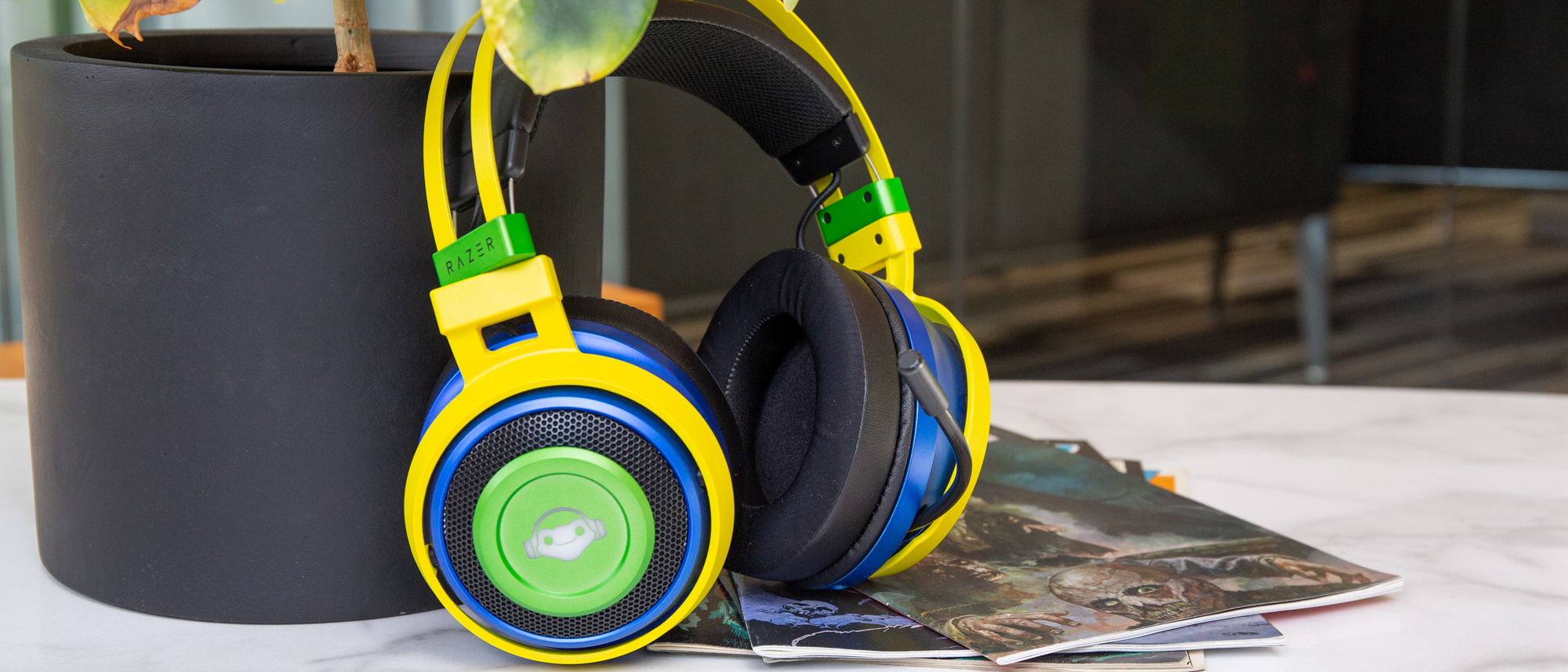Laptop Mag Verdict
The Razer Nari Ultimate Lucio Edition borrows a bit of flair from Overwatch and augments your game with 4D effects and crisp, full audio.
Pros
- +
Fun, lightweight design
- +
Cushy, gel-cooled ear cups
- +
Highly customizable
- +
Crisp sound in different gaming environments
- +
Deep 4D effects
Cons
- -
A tad expensive
- -
Can't use wirelessly on several consoles and mobile devices
Why you can trust Laptop Mag
Razer delivers a step up in design with its Nari Ultimate Wireless Overwatch Lucio Edition. The proprietary HyperSense haptic technology adds a different aspect to audio immersion for your games, bringing in haptics to a wireless headset. Recalling fan-favorite Lucio's signature phrase, "Feel the music," gamers can feel the game. Haptics aside, you get a comfortable headset that delivers crisp audio in a multitude of gaming environments, but the $169 price tag might give some otherwise eager gamers pause.
Design
I was impressed that this Overwatch Edition headset embodies the character of the DJ/freedom fighter, Lucio. The Nari Ultimate's new Overwatch-inspired design sports a vivid yellow metal and plastic frame, green accents, and blue ear cups, a look that mimics Lucio's original outfit.
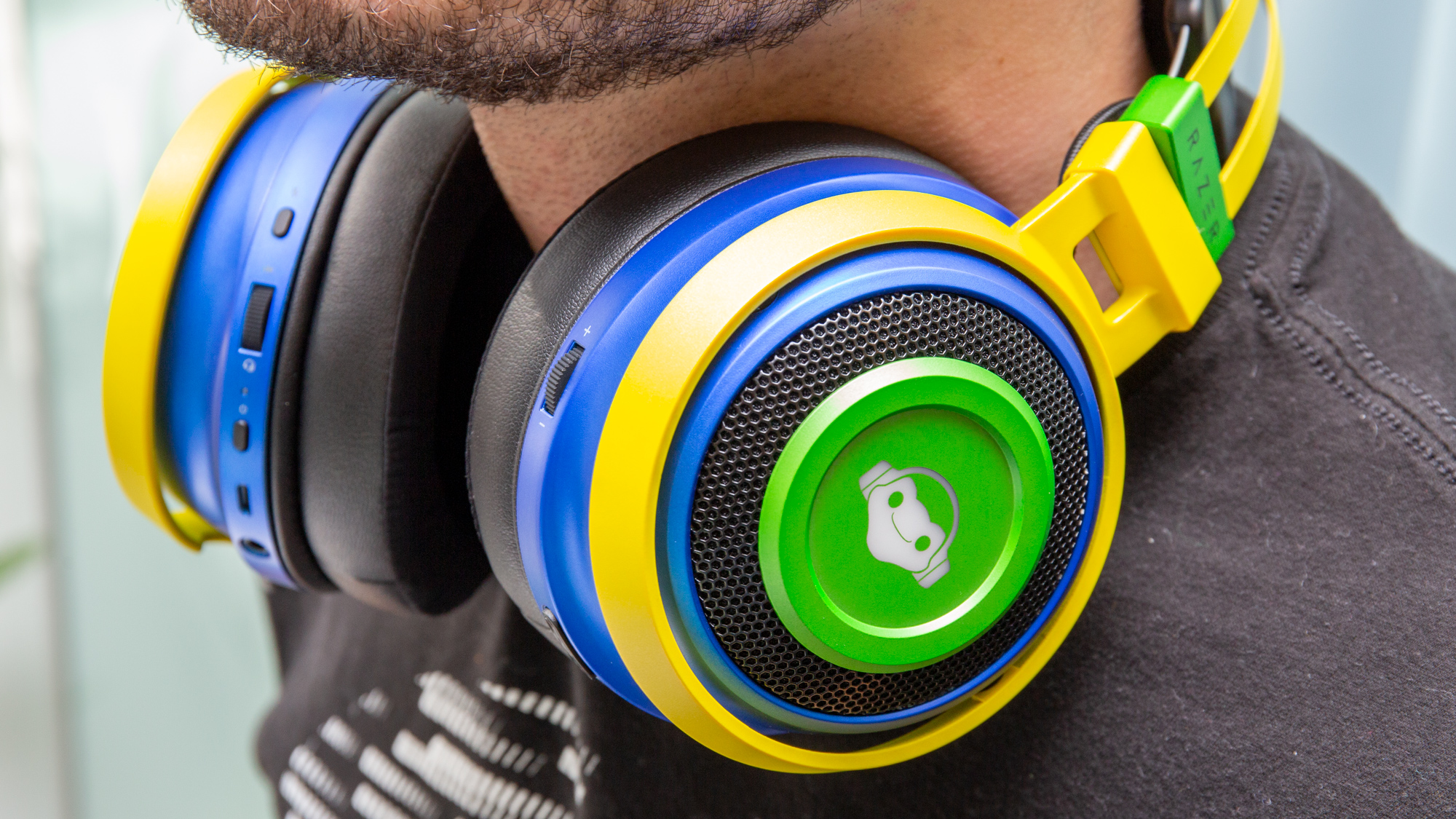
The character's well-known frog emblem sits on the sides of the ear cups, lighting up once turned on. And just like most backlit Razer products, the frogs' lighting can be customized on PC through Razer's RGB Synapse software. Console players are out of luck, as that variation of the headset lacks a customization option, offering just a static white light.
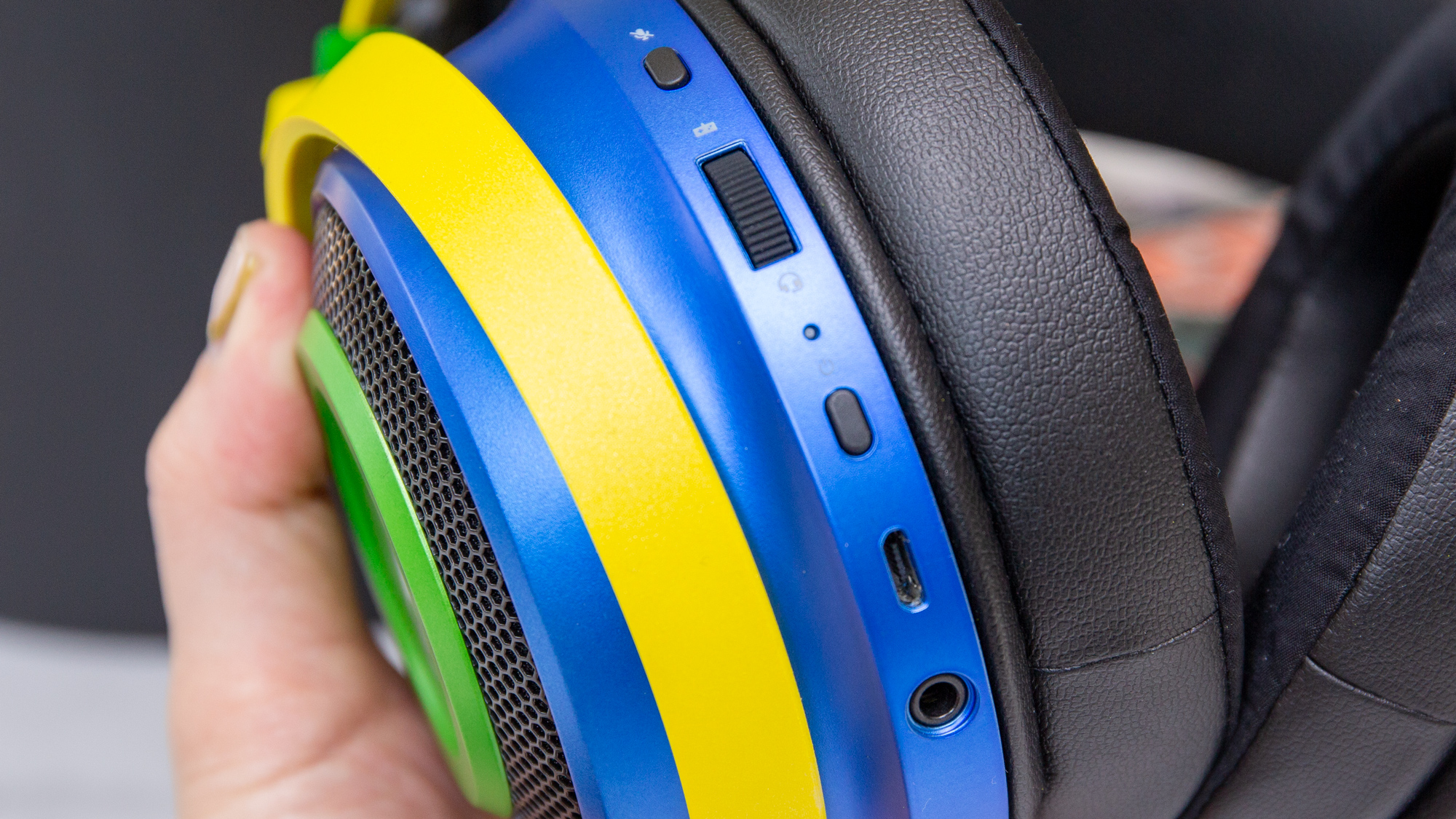
The back of the left ear cup has buttons for power and muting the microphone. You'll also find a scroll wheel for in-game chat, a micro USB port and an audio jack.
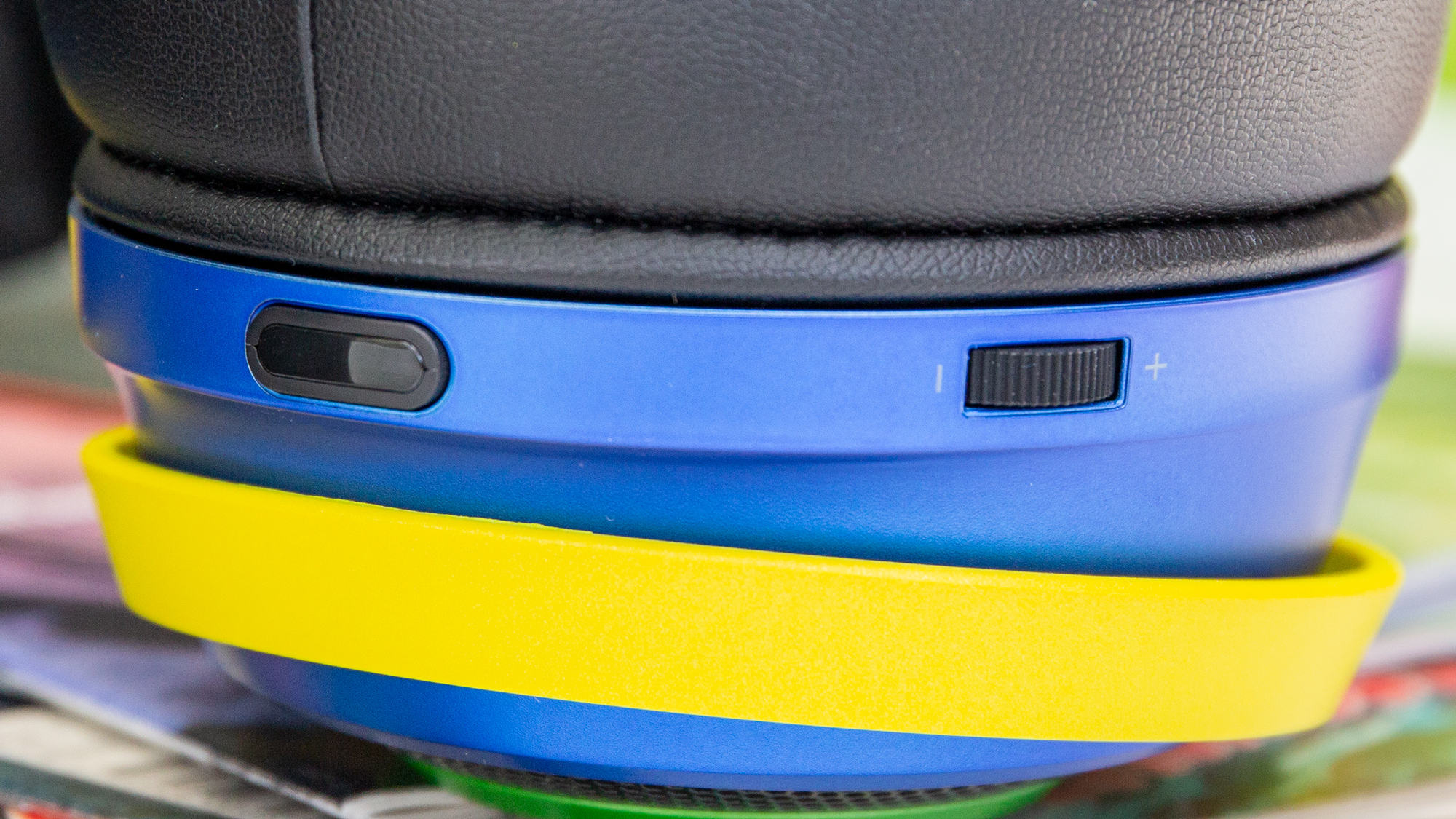
On the right ear cup sits the main volume control and a large cavity that houses the USB dongle slot. This slot is highly convenient when you're traveling, as you can stow the small, yet important component securely.
Comfort
Wearing headsets with large drivers tends to be uncomfortable, depending on the materials used, due to weight. But the Nari is relatively very light. With any gaming headset, I like to see if it can pass what I call the "headset headache" test. A lot of gaming headsets tend to be too tight, and it can take hours of wear to loosen them up. And as I wear glasses, I can testify to the pain induced at the temples of your forehead from glasses being pushed too tight during long gaming sessions with certain headsets.
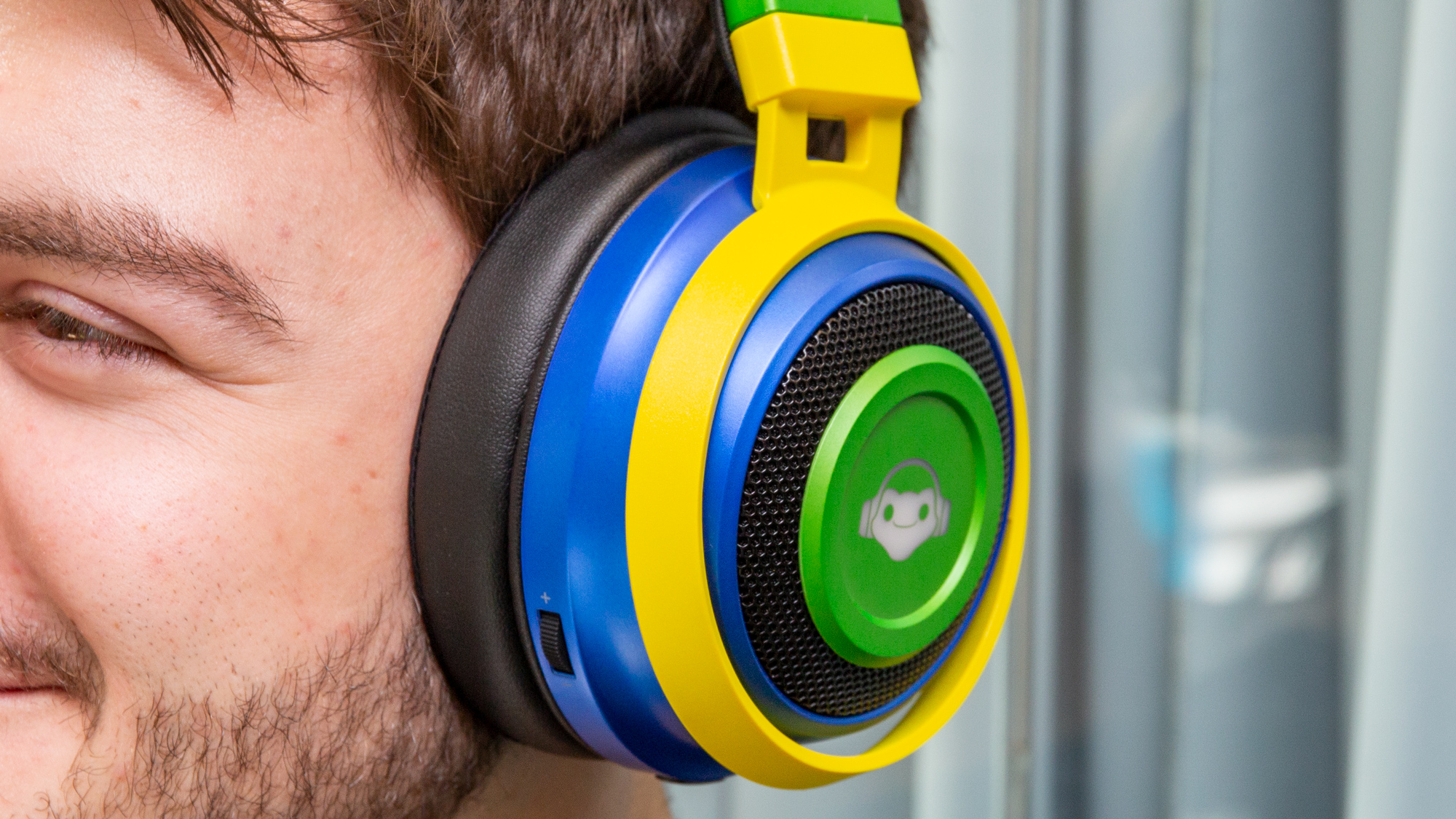
Showing its attention to detail, Razer ensured that the Nari Ultimate memory-foam ear cups are specially designed to fit your eyeglasses for better comfort. When playing various games for long durations with my eyeglasses, I did not encounter the "headset headache" at all with the Nari Ultimate. Even when I wore large hoop earrings, the large, over-ear cups remained comfortable. That memory foam is especially important when haptic feedback is in the mix. The cushions help to alleviate the feedback from all that rumbling, allowing for a more pleasant gaming experience.
- MORE: Best Gaming Headsets
And thanks to the cooling gel infused into the foam, my ears didn't suffer from sweat buildup during those intense moments. On the contrary, my ears were just as dry as when I took the headphones off as when I put them on. I literally wore the headset all day with no problems.
Setup
Setup on the Nari Ultimate is supereasy compared to other wireless headsets that require additional plugs and settings. The bundled USB wireless receiver makes connecting to a PS4 or PC as easy as plugging in a dongle. Unfortunately, you have to use the audio cable to play on an Xbox One or any mobile device. But I really appreciate that you can use the HyperSense technology; you just need to make sure the headset is charged.
Synapse
Similar to most Razer products, the Nari Ultimate gains a host of features from Razer's Synapse software. Using the most current iteration of the program, Synapse 3, you can customize the color and effects of the backlit frogs on the sides of the ear cups. You'll also have the ability to calibrate the surround sound and enable/disable the THX Spatial Audio feature. Here, you can adjust mic volume and sensitivity, set the power saving mode, and adjust the overall sound via an old-school equalizer. And if the HyperSense is too intense for your liking, you can adjust the strength or turn the feature off altogether.
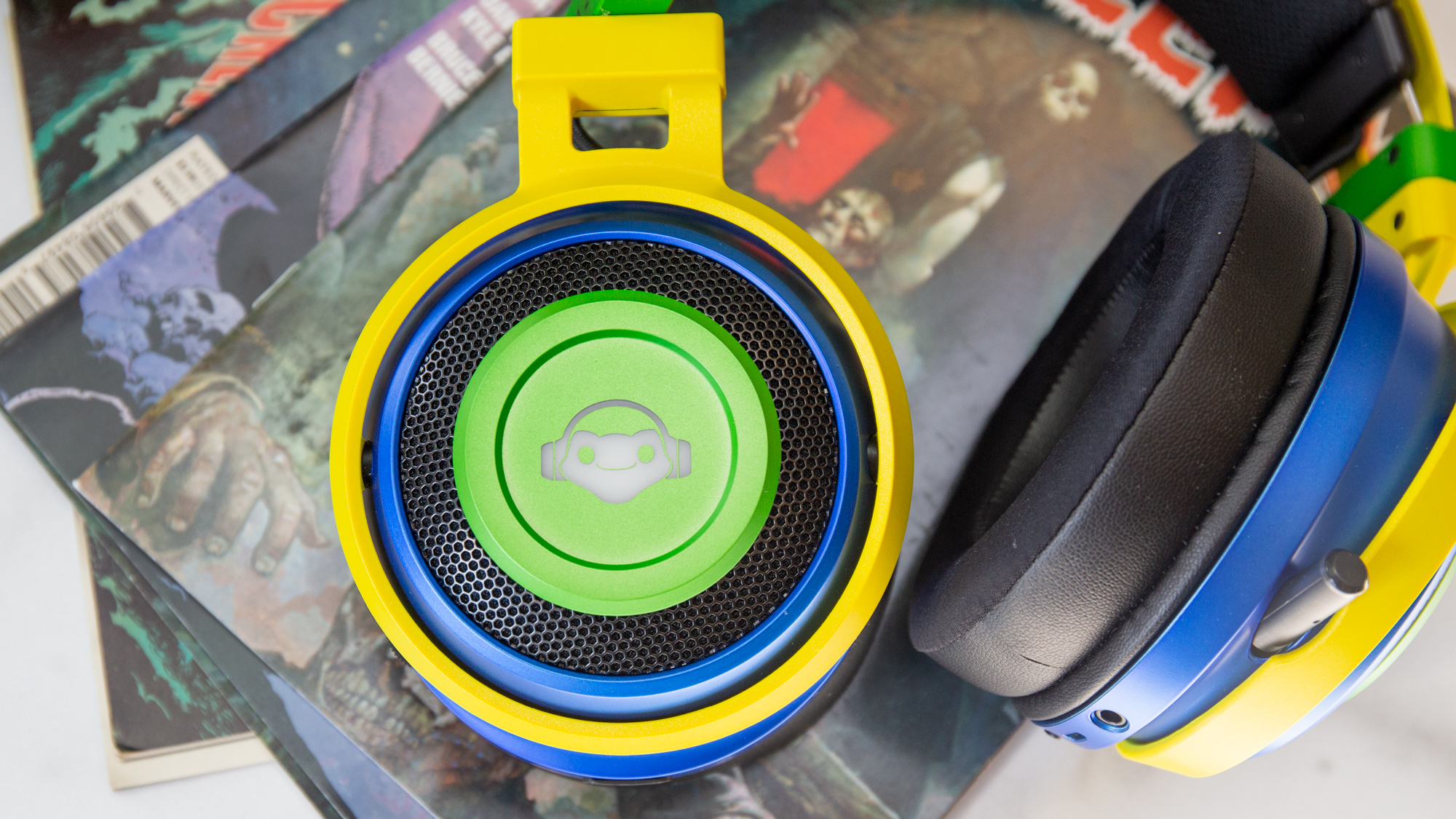
Once the program is installed and you have the wireless transmitter plugged into the computer, the software automatically sees what device you are using to determine exactly what can be customized.
HyperSense
My first reactions when I learned I would be reviewing a haptic headset were a mixture of excitement, curiosity and skepticism. To try to give you an idea of what's going on, imagine two little subwoofers on your head. HyperSense, a haptic technology created by Lofelt, essentially transforms the sound signals from your game into something you can feel. It's a more evolved take on the rumble technology found in your game controllers. However, instead of rumbling at key points of a game, HyperSense measures shape and sound frequency, creating a realistic haptic experience. The resulting vibrations offer different intensities and realistic flow.
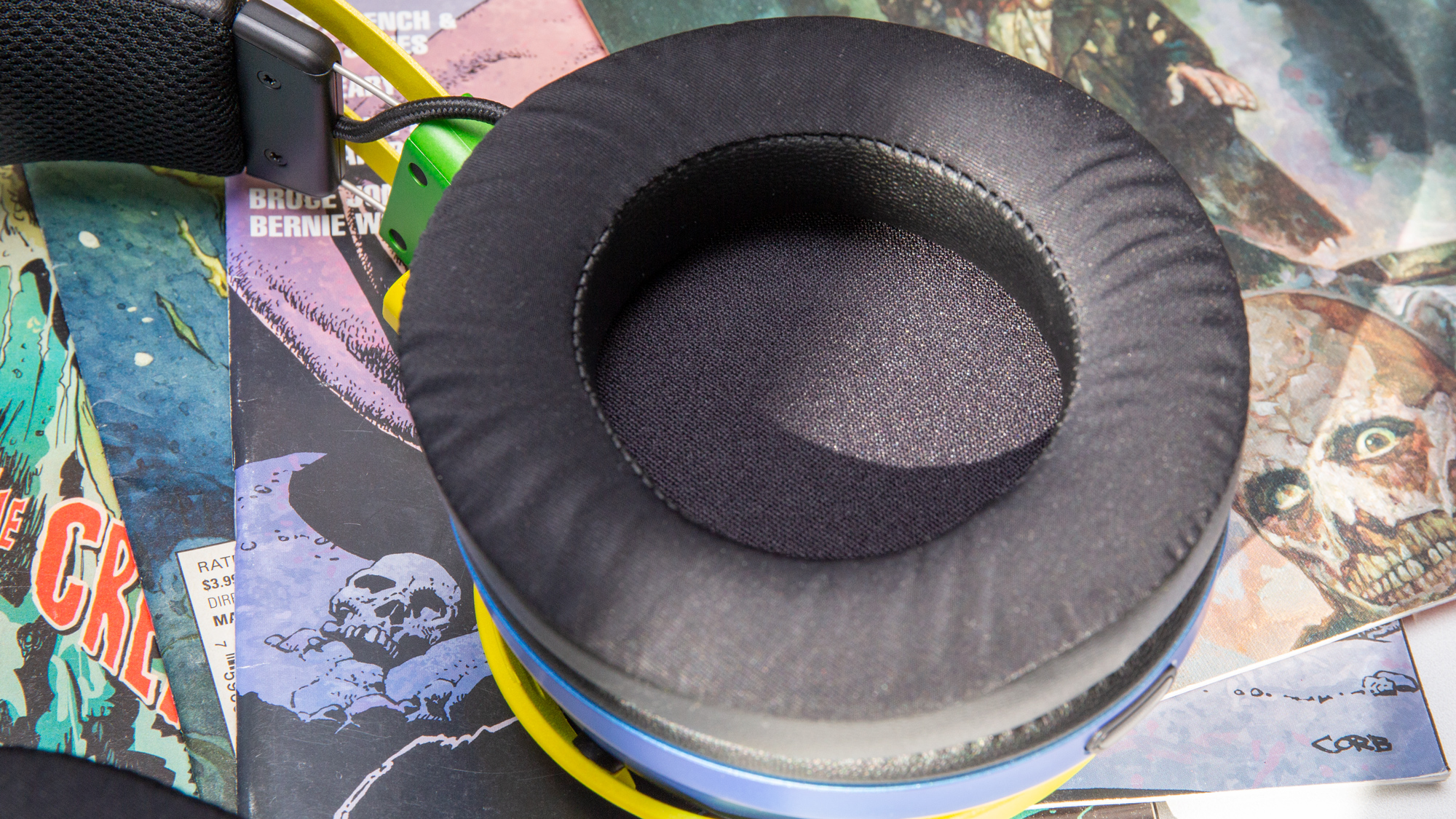
To test HyperSense, I played Borderlands 3, Overwatch, Call of Duty: Modern Warfare, Red Dead Redemption and Afterparty. First, I went extreme to see how a pure shooter like Call of Duty Modern Warfare would be in the multiplayer mode. I teamed up with friends to have a party chat on PS4 and add another dynamic to the test. During multiplayer, you have, of course, bullets flying everywhere, explosions and your own weapon to fire that will cause haptic feedback.
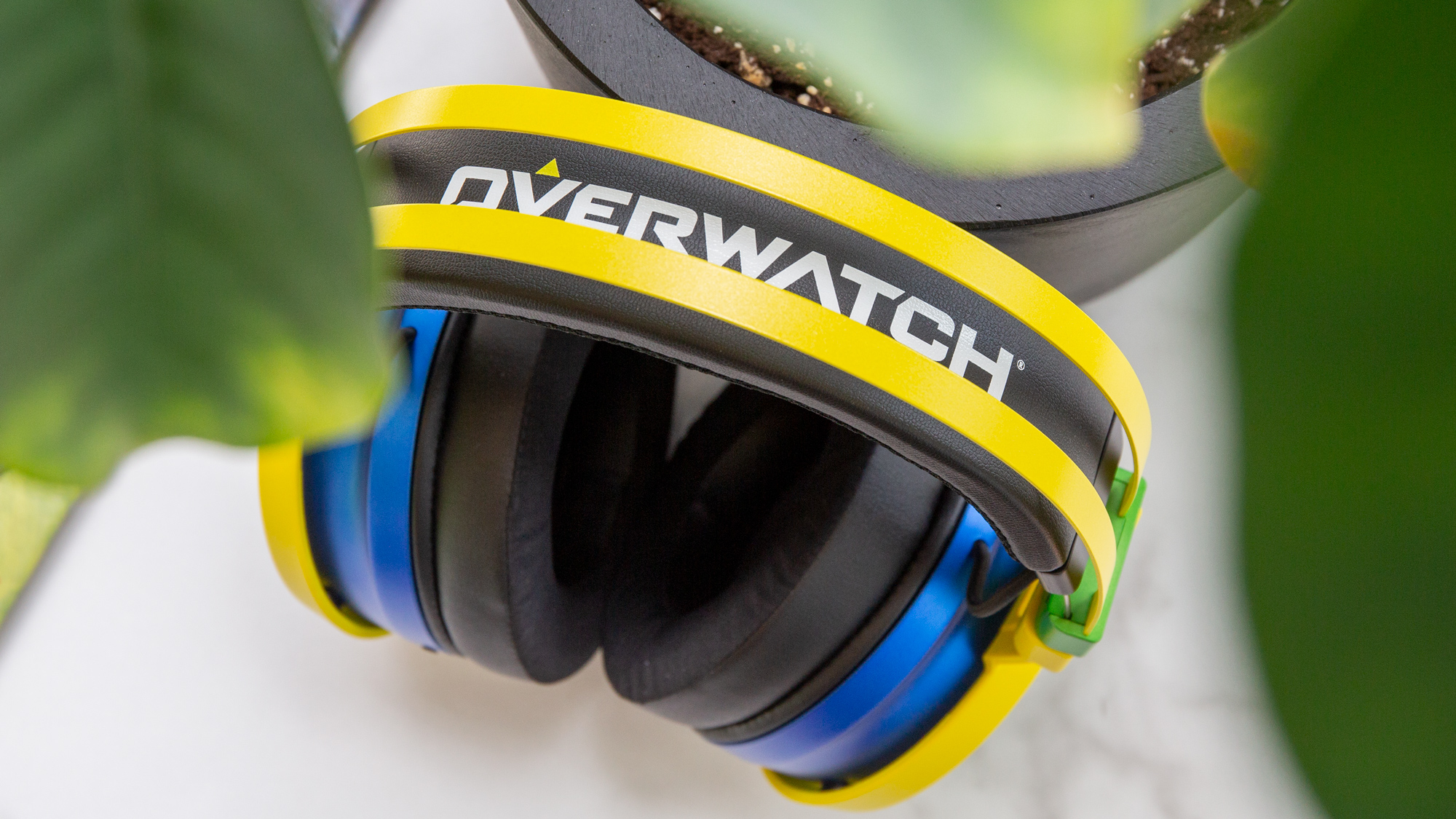
At first, the haptics were jarring, especially when I was firing my weapon. I quickly learned to use the Synapse EQ software to balance out the regular audio against the haptics when I was gaming on my PC. It was trickier on the consoles, since they lack Synapse. I had to balance the audio in the game with what I had on the headset so the haptics were not overbearing.
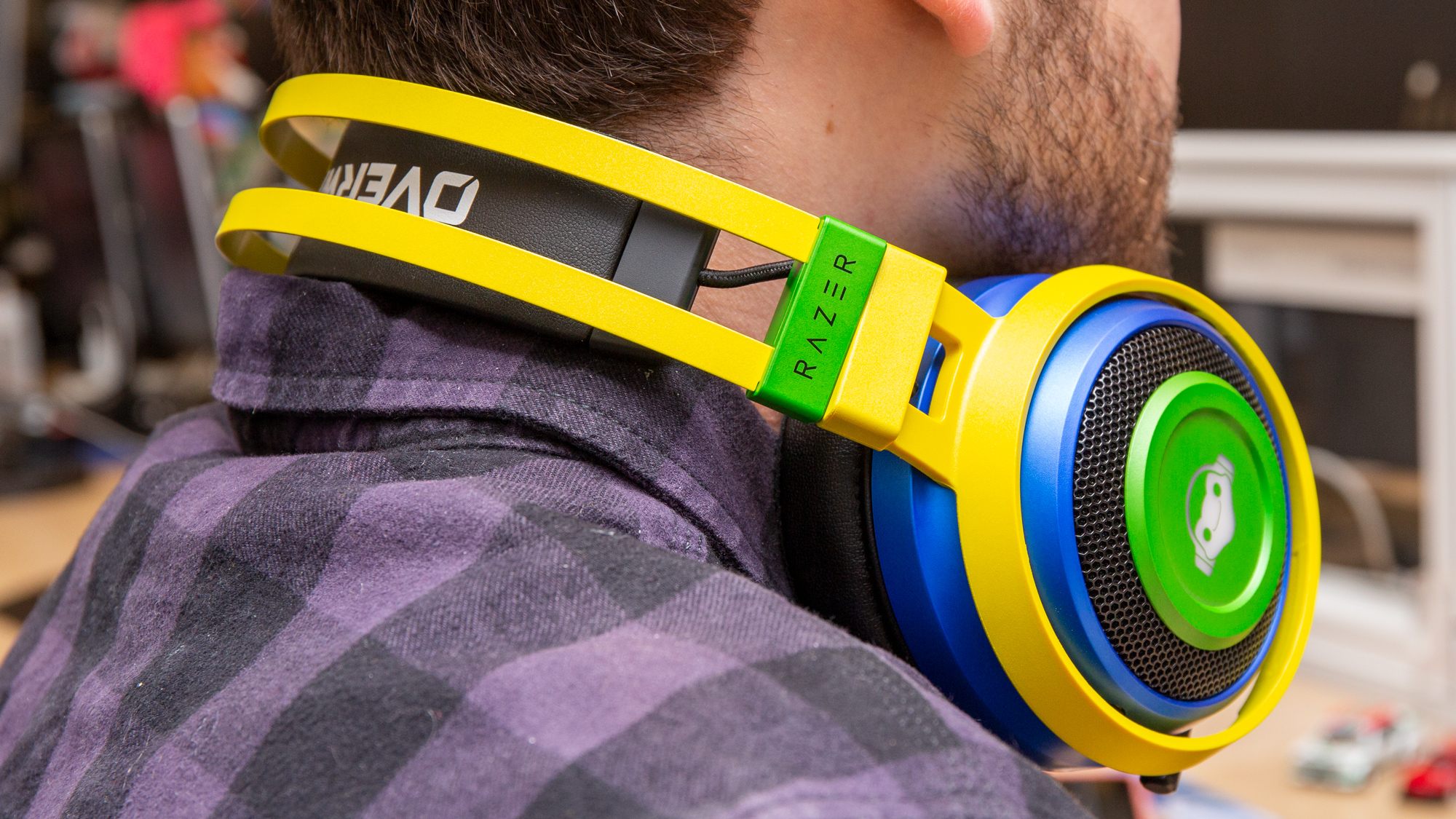
I had a more balanced audio experience during Borderlands 3, which has various dialog options, explosions, vehicle engines and more. Despite the haptics, I had no problem hearing Amara the Siren trash talk her enemies or the distinctive growls of a pack of wild jabbers. When I had the misfortune of getting zapped by an energy attack, I felt a strong, steady pulse that transitioned into short burst as I shot my pistol.
And when the action subsided, the haptics switched over to my heavy footsteps as I made my way deeper into the marshy swamp. If I stood still, the haptics matched the bass line of the music.
Audio performance
Yes 4D is fun, but if the headset doesn't sound great without all the fancy bells and whistles, it's pretty much a wash. Luckily, that's not the case with the Nari Ultimate, as the headset delivers rich, robust audio on several fronts. On Kaytranada's "10%," HyperSense really enhanced the bass line without overwhelming the rest of the track.
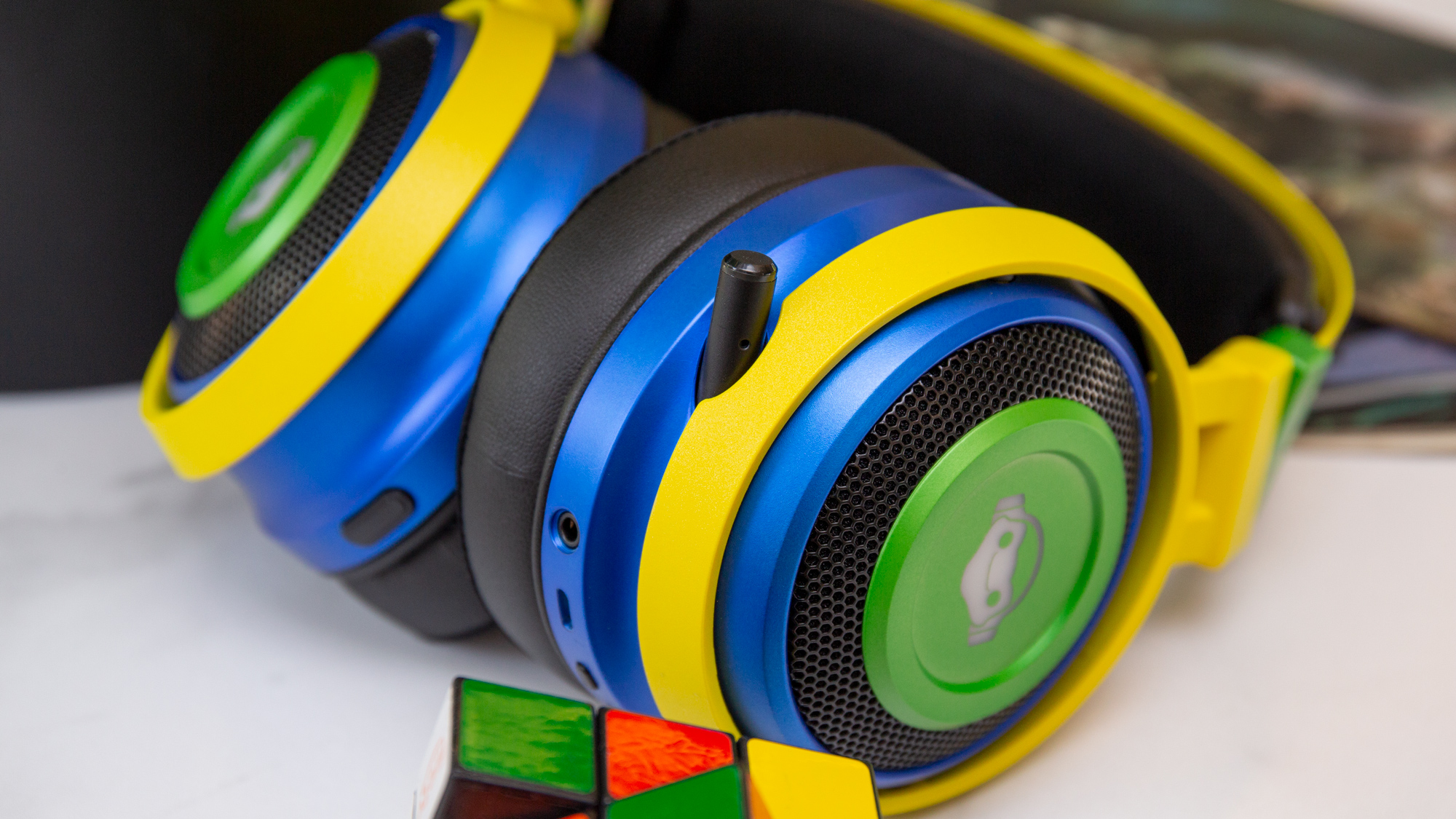
But not every song needs those extra lows. For songs like Alex Isley's "Colors," I disabled HyperSense and let the 50mm neodymium drivers do their thing. I was pleasantly surprised at the generous soundstage, which allowed me to hear every piano key and sweet harmony. Next, I switched over to the THX Spatial Audio feature in order to try out the surround sound. And while the headset did produce a concert hall-type sound, the audio wasn't as warm when the feature was disabled.
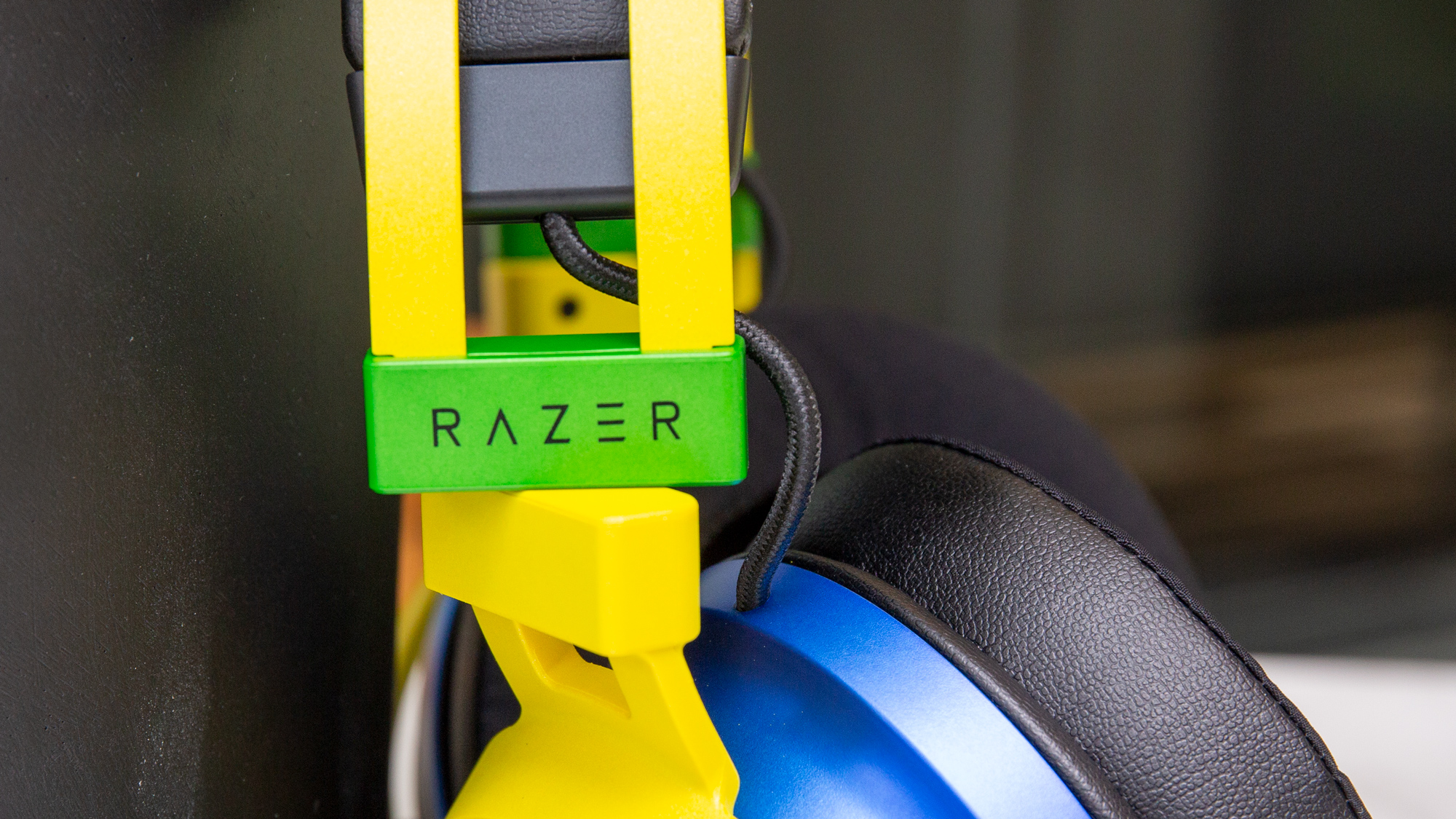
Spatial audio really shines during gameplay, though I made the mistake of using the feature while playing the Dying Light. Running through the desiccated Old Town was already scary, but hearing an unknown shuffling sound from the left or right is downright terrifying. Throw in the wet, gooshy sound of a zombie bite, and I had to take a break from the action.
Switching over to Borderlands 3 with friends, my companions said they could not hear me as loud , despite all the gunplay, special powers and explosions happening all around us. My crew did note that the mic sounded better with spatial audio off, not so much because spatial audio was detrimental to our communication, but because it was noticeable. I had no trouble hearing anyone on my end.
Battery Life
If, like me, you enjoy marathon gaming sessions, you'll want to make sure you keep the Nari Ultimate charged. Razer estimates 8 hours of battery life with Chroma and HyperSense enabled, which is how I imagine most people will use the headset. Those that can do without the 4D effect and light show can expect to get about 20 hours. I squeezed about 7 hours and 37 minutes out of the headset, with all the bells and whistles going.
Overall
Thanks to its haptic 4D effects, the Nari Ultimate was already a cool wireless gaming headset. But once Razer tricked it out in Lucio’s color scheme, it took it to a whole other level. The haptics are varied and really enhance the immersion when playing games. And it sounds great when you’re just listening to music. The Synapse software adds different layers to the functionality, but unfortunately you lose quite a bit of it when you switch over to console. At $229, the Razer Nari Ultimate Overwatch is a tad on the expensive side, but it’s unlikely you’re going to find a headset that combines 4D effects and spatial audio at a cheaper price point. Gamers looking to enhance their experience should definitely put the Razer Nari Ultimate Overwatch Edition headset on their short list.
